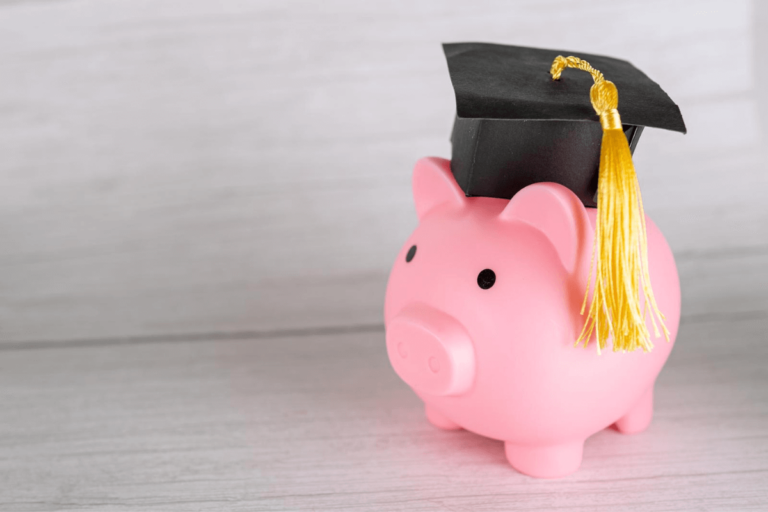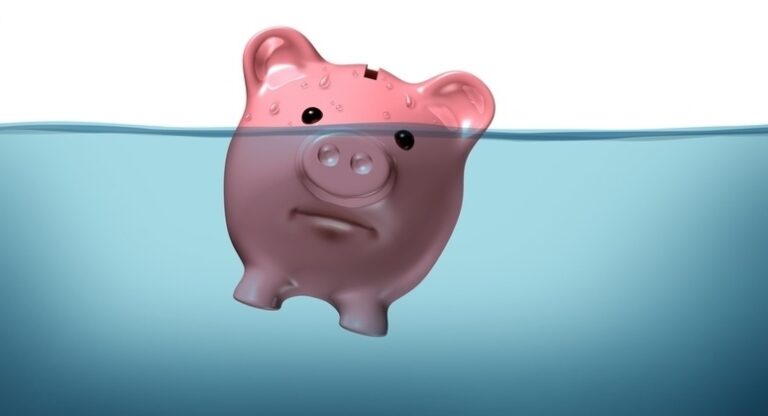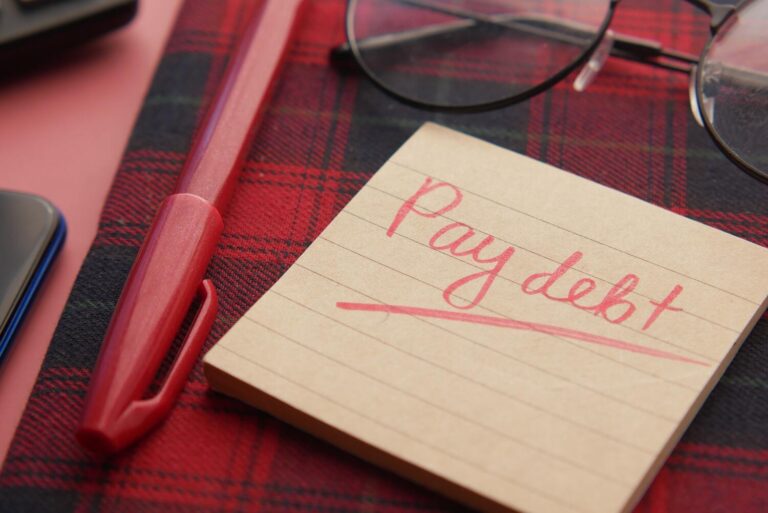Tired of Student Debt? Here’s How I Paid Off $100k+ Fast

Having 100k in student loan debt (or more) isn’t fun. I can tell you as someone who didn’t have $100,000 worth of student loans, then I magically did – being part of the 6% with that kind of student loan debt isn’t fun.
So here are some strategies and steps we used to pay off $100,000 in student loans in just 21 months!!!
Ideas we used to Pay Off $100,000:
When I first went to college, back in 2005, I had no clue that I would end up with over $40,000 in student loans. My mom kept telling me that she filled out this FASFA thing to help get the money I needed for college.
Fast forward to 2012. I had been paying my student loans for 3 years now and I had actually got them down to a semi-reasonable amount – $25,000 ish. However, in 2012 I met my eventual wife.
And as the saying goes, what is yours is mine and mine is yours quickly became a reality when we got married. My wife’s $275,000+ worth of student loan debt was now ours.
So how in the heck were we going to pay off not just $100,000 in student loan debt, but an entire mortgage worth of debt?
How to Start Paying Off $100,000
Trying to find the silver lining when it comes to paying off student loan debt is not always easy, but the first tip to paying off student loans that topple the six-figure mark is to do just that.
The silver lining in having $100,000+ in student loans (Or $300,000 combined as we did) is that most likely it is a bunch of small loans that when looked at individually are more manageable.
If you were given the task to eat an elephant, how would you start? One bite at a time of course.
Looking at student loans that are the size of a mortgage can be really demotivating. Just the idea of paying off six figures worth of student loans will stop most people dead in their tracks.
So here are 5 quick strategies to help you start paying off $100,000 or more in student loans. The first – focus!
1. Stop Spraying Your Money.
The first strategy when it comes to paying off student loans (Or any debt for that matter) is concentrating your efforts to pay off one specific loan at a time by making extra payments.
Where most people tend to stray in the wrong direction is they will throw an extra $100 at the house, $50 at the car, and another $200 towards their credit card.
Instead of “Spraying” $350 and not really making much of a dent in anything, take that money and concentrate it. Target one specific loan at a time in order to free up cash using the debt snowball approach.
2. Cash Windfall Your Student Loans
Anytime you get a large sum of money, or a “Cash windfall,” immediately use it to pay off your student loans.
Large cash gifts from a wedding, inheritance or even your tax return are better spent paying off your student loans instead of spending or even saving.
A simple way to figure out whether or not you should save your cash windfall money or pay off student loans is to use an interest calculator. The interest on $100,000 worth of student loan debt at 5% is going to be significantly higher than the 2% savings return on your $3,000 tax return.
One tip to using the cash windfall approach is to pretend you never got the cash in the first place and throw it all at one specific student loan.
3. Find Ways to Make More Money
If you have $100,000 in student loan debt chances are you should have a high earning job (Or you would at least hope that is the case).
However, whether you make lots of money or you are a public school teacher with student loan debt (like me), the key to paying off student loans faster is to have more money to do so.
In other words – you will need to find ways to make more money.
Doing this while you’re young and don’t have a family really isn’t that hard and there are countless ways to make $500 fast. Just making an extra $500 per month means you can pay an extra $6,000 per year towards your student loans.
Ideas to make more money include:
- Use spare change apps like Acorns
- Complete surveys when you’re bored at work
- Walk dogs
- Start a blog and throw ads on it
4.Use a HELOC
When you have $100,000 or more in student loans, sometimes you will have to use different approaches to pay them off.
One strategy involves using the equity in your home to pay off your student loans. While this is not a concept for just anyone the process is pretty simple:
- Leverage a dormant asset like home equity
- Take out a HELOC
- Use the HELOC to pay a specific loan
- Throw all extra cash at the HELOC and make minimums on student loans
- Wash, rinse, repeat.
Why is this effective?
If you learn how student loan interest works, the interest compounds daily based on the principal student loan balance. When student loan balances are over $100,000, at 5% interest that is $416 per month alone. So if you have an $833 payment, only $417 is going toward the principal.
By leveraging a HELOC, the student loan principal is displaced, thus making the minimums more effective and expediting the process.
5. Refinance at the right time.
The answer to the big question, “How to pay off $100,000 in student loans,” starts with having a game plan. Sometimes refinancing might be part of that, sometimes it is actually not the best idea.
Refinancing student loans is both a great idea and a bad idea. The first thing you need to assess is whether or not refinancing student loans is right for you.
The reason for this is there are a lot of disadvantages that come with refinancing student loans like consolidating. Consolidation usually occurs with a refinance which can end up costing more of over the life of the loan.
However, if you’re OK with losing federal perks that your student loans offer, refinancing for a lower interest rate can save you tons of money in interest each month, freeing up more money to pay off your student loans.
My two favorite student loan refinance companies are:
- Penfed Refinancing
- Lendkey Refinancing
What Paying Off $100,000 in Student Loans Looks Like.
From November 2016 to November 2019 we managed to pay off $186,000 in student loan principal debt.
The table below shows our student loan repayments since we started focusing on getting student loan debt free in February 2016:
| Student Loan | Amount Jan 2016 | Updated Dec. 2019 |
| MOHELA | $14,000 | 0 |
| ESCI & Navient | $13,500 | 0 |
| Undergrad | $92,433 | 0 |
| Graduate | $155,511 | $76,000 |
Getting ahead of the interest was half the battle.
For example, in March of 2017, the graduate loans capitalized, adding $17,000 to the principal alone. In other words, over $1,400 per month was added back to our loans.
Side note: Interest is why we are so passionate about paying off student loans as fast as possible, that and Income Based Repayment (IBR) may help us now… but we could not look in the mirror every day and pay minimums hoping that one-day public loan forgiveness would work out.
So if you’re someone who happens to be in the six figures of student loan debt boat, in addition to using the 5 strategies above, getting ahead of your interest is essential.
But the real magic when it comes to paying off $100,000 or more in student loans:
WHY: Student Loan Debt Free at 33
When I initially wrote this article in the fall of 2017, I stated that at 34 and 33 my wife and I would be student loan debt free.
At that time when I wrote this blog post, we owed $197,000 in student loan debt. Slap on another $4,000 in accrued interest, and the total was just over $200,000. Conservatively, we were paying about $4,500 each month towards our student loans.
Keeping up that same pace, sometimes paying more and sometimes paying less, we have managed to (seen in the chart above) pay our student loans down to a total of $82,200. Granted we have $34,000 in a HELOC, the actual student loan accounts should be paid off by March 2020, leveraging the HELOC process.
So just shy of 33 and 32, my wife and I would be student loan debt free (How many people with a doctorate in the medical field have you met who are debt free at 33?).
I share this ONLY because if you had asked us at 28 and 27 if we ever thought we would even pay off our student loans EVER, let alone by 33 and 32, I would have laughed.
Our game plan before taking action steps to pay off over $300,000 in student loans was just to pay the minimums and hope that forgiveness programs didn’t change in the next 20 years. But once we did the math, we realized that paying them off early would actually be about the same as the PAYE program.




